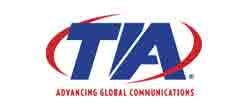TIA provides input to FCC re: equipment authorization rules for deploying Internet of Things
On October 9, the Telecommunications Industry Association (TIA) announced that it has filed comments with the Federal Communications Commission (FCC) in response to its notice of proposed rule-making on equipment authorization for radio frequency (RF) devices.
The FCC is proposing broad revisions to its rules that govern the evaluation and approval of RF devices for sale in the United States. These changes are based on a long-standing and ongoing partnership between TIA, representing the information and communications technology (ICT) manufacturer community, and the FCC. The reforms are centered on a commitment to constantly improve the equipment authorization process to ensure that manufacturers can meet consumer demands while making certain important rules regarding protections against harmful interference that may impact consumers’ use experience are complied with.
“TIA appreciates the Commission’s focus and attention to important equipment authorization issues which squarely impact manufacturers’ and suppliers’ ability to provide innovative products and services to diverse markets both in the United States and elsewhere,” said TIA in its filing. “By prioritizing the streamlining of its equipment authorization rules, the Commission will enable greater investment in new, cutting-edge products such as software-defined radio and modular transmitter-based devices that respond to market-driven demands and will be key to the deployment of the Internet of Things."
Specifically, in its detailed input provided to the FCC, the TIA:
-- Describes how the FCC’s equipment authorization process has been largely effective to date, and supports the FCC’s proposals to make its regulations clear and easily understood through needed rule consolidation and streamlining, as well as the continued success of the FCC’s informal guidance process for compliance with technical requirements Knowledge Database, or KDB, guidance);
-- Supports the FCC’s proposal to establish a new self-declaring compliance approach for equipment with an established track record of conformity to FCC requirements, and the future consideration of such an approach to further categories of wireless equipment needing FCC approval;
-- Supports the FCC’s proposed improvements to how equipment is certified and how related manufacturer responsibilities are determined;
-- Supports the FCC’s proposals to improve regulations on imported ICT, including a new provisional grant approach that would permit manufacturers to better plan for product launches and meeting related consumer demands;
-- Generally supports the FCC’s proposed changes to short- and long-term certification grant confidentiality rules, which are imperative to protecting proprietary design specifications and facilitating innovation;
-- Supports the FCC’s proposals to realize the benefits of electronic labels for ICT equipment; and
-- Supports the FCC’s proposals to reduce administrative responsibilities on importers of ICT through the elimination of unnecessary paperwork, as well as additional steps needed to meaningfully reduce unnecessary clerical burdens.
Learn more about the TIA’s comments here.
